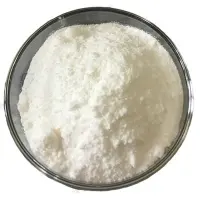-
Categories
-
Pharmaceutical Intermediates
-
Active Pharmaceutical Ingredients
-
Food Additives
- Industrial Coatings
- Agrochemicals
- Dyes and Pigments
- Surfactant
- Flavors and Fragrances
- Chemical Reagents
- Catalyst and Auxiliary
- Natural Products
- Inorganic Chemistry
-
Organic Chemistry
-
Biochemical Engineering
- Analytical Chemistry
-
Cosmetic Ingredient
- Water Treatment Chemical
-
Pharmaceutical Intermediates
Promotion
ECHEMI Mall
Wholesale
Weekly Price
Exhibition
News
-
Trade Service
Self-inflammatory diseases (AIDs) are a rare set of hereditary cyclical diseases that have been gradually recognized in the last decade.
cause is systemic inflammation caused by genetic mutations that alter the proteins it encodes, leading to inherent immune disorders.
most patients develop the disease earlier, from a few hours after birth to the teenage years can become ill, a small number of patients become ill in adult life.
autoimmune inflammatory diseases can be caused by a single gene immune error.
Janus kinase (JAK) family is a class of non-receptoper tyrosine kinase family associated with cytokine receptacle composition, containing 4 tyrosine kinases (JAK1, JAK2, JAK3, TYK2), which play a central role in the important signal transdulation of the immune system, and its single gene error has an important effect on immune function.
A team of researchers at the Icahn School of Medicine in Mount Sinai, USA, published an article online in the journal Immunity entitled "Complex Autoinflammaline Syndrome Unveils Fundamentals of JAK1 Kinase And Biochemical Function", which reveals the fundamentals of JAK1 kinase transcription and biochemical function through complex self-inflammation syndromes.
the study stems from a visit by researchers.
18-year-old woman was diagnosed with complex primary autoigenic inflammation and admin syndrome when she was admitted to hospital and showed symptoms of her own inflammatory disease from birth.
The researchers initially identified recessive or newborn gene mutations as the cause of the patient's clinical syndrome based on the patient's clinical history and characteristics, and identified a head-to-head mutant, JAK1 c.2108G;T, in etiology screening, which led to the replacement of isolysine with isolysine in 703 places (S703I) in highly conservative regions.
to determine whether the role of the S703I is a functional gain strategy (Gainof Fuction, GoF) or a functional inaction strategy (Loss of Fuction, LoF), the researchers conducted experiments in the fibroscular sarcoma cell line U4C, which showed that the S703I is the GoF for the transmission of stat signals induced by the substrate and cytokines.
Then the researchers conducted further mechanism studies and found that the JAK1 stent of the receptacle complex was not affected by the patient mutation, indicating that THE S703I could not activate JAK activity by increasing the formation of the receptacle complex, but the study also found that stat phosphorylation was greatly reduced without JAK1 activity.
however, after inactive in the kinase domain of S703I-JAK1 (S703I/K908A), the abnormal increase in STAT phosphorylation under cytokine stimulation increased.
results show that the S703I-JAK1 trans-activated JAK2 and TYK2 reveal that the false kinase domain can also regulate the trans-partner JAK in addition to the traditional understanding of shun regulation.
confirmed that JAK1 overactiveness was a potential driver of the patient's clinical disease, the researchers considered using JAK inhibitors for the patient's clinical treatment.
after 8 weeks of treatment with a low dose of Tofacitinib (5 mg per day), the patient's circulating inflammatory markers (blood sink and C-reactive protein) normalized, after which dermatitis improved completely.
6 months of treatment, the patient's gastrointestinal symptoms were completely relieved.
of colon tissue showed a recovery of the hidden nest structure and the complete disappearance of eosinophil immersion.
the patient's symptoms remained stable during the follow-up period of 2 years.
, this study shows that autoimmune diseases can be caused by single-gene immune errors, which provides new ideas for personalized medicine and a platform for discovering basic biological principles.
.







